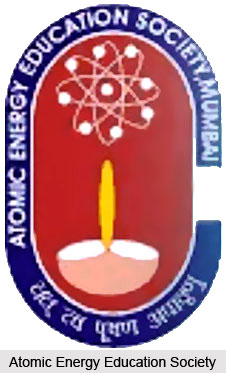 Atomic Energy Education Society (AEES) is an Autonomous Body, under the Department of Atomic Energy, Government of India. It was setup to provide quality education to the children of the employees of the Department of Atomic Energy and its constituent units up to junior college level. Atomic Energy Central Schools and Junior Colleges are spread all across the country and are affiliated to CBSE and other boards. AEES has got 30 Schools/Junior colleges at sixteen different centres with about 28000 students and about 1547 teaching and 300 non-teaching staff. From a modest beginning in the year 1969 with one school in Anushaktinagar, Mumbai, the AEES has grown steadily, and presently administers 30 schools and junior colleges at 16 locations all over the country. It has grown into a dynamic organization managed by 1781 staff members, of which about 1547 are teachers, entrusted with the responsibility of nurturing 27,889 students.
Atomic Energy Education Society (AEES) is an Autonomous Body, under the Department of Atomic Energy, Government of India. It was setup to provide quality education to the children of the employees of the Department of Atomic Energy and its constituent units up to junior college level. Atomic Energy Central Schools and Junior Colleges are spread all across the country and are affiliated to CBSE and other boards. AEES has got 30 Schools/Junior colleges at sixteen different centres with about 28000 students and about 1547 teaching and 300 non-teaching staff. From a modest beginning in the year 1969 with one school in Anushaktinagar, Mumbai, the AEES has grown steadily, and presently administers 30 schools and junior colleges at 16 locations all over the country. It has grown into a dynamic organization managed by 1781 staff members, of which about 1547 are teachers, entrusted with the responsibility of nurturing 27,889 students.
Organisation of Atomic Energy Education Society
AEES functions are coordinated and controlled by the headquarters, familiar as the Central Office, Mumbai. It is situated at the A-wing of AECS-6, Mumbai. At the administrative level, the AEES has a network of principals, vice-principals and headmasters/headmistresses who are responsible for the smooth functioning of all the schools. To coordinate their activities, integrate their ideas and plan ahead, conferences of the principals and headmasters are organized every year.
Objectives of Atomic Energy Education Society
The watchword of the AEES is excellence. The AEES has the unique distinction of having developed its own textbooks that are sympathetic to the mixed abilities of its heterogeneous student community. A team of teachers has successfully launched mathematics textbooks for Classes I to V, English textbooks for Classes I- IV, textbooks to teach environmental science to Classes I and II and a Hindi Pravesika for the Prep. Class. The English Reader for Class V, the Hindi textbook for Class I and textbooks on environmental science for Classes III and IV and textbooks for computer science for classes IV to X are currently under preparation.
To make the efforts of the AEES more enduring, it was decided to educate the bright children from socially, educationally and economically poor backgrounds, residing in the rural or tribal belts around the vicinity of the AEC schools throughout the country. The Talent Nurture Programme (TNP), which started in 1999, presently benefits 427 children, of whom 203 are girls. Apart from free education up to Class XII, the children selected for the TNP receive a monthly scholarship, uniforms and books as well as medical benefits. The TNP is currently active in ten AEES centres and is to be extended to a few more centres this year.
Through a common comprehensive system of testing and evaluation, the AEES seeks to encourage application of learning as well as foster reasoning and analytical thinking in the children. Enrichment programmes for Class XI and Junior Maths and Science Olympiad training programmes for Class IX (held in collaboration with the HBCSE), motivational lectures on science and other topics, diagnostic testing, and summer coaching camps are organized to assist both the gifted and the less able students. Physical education, computer education, art and science exhibitions, visits to the AEES botanical garden and a classroom library system are other important features of a broad-based curriculum. Apart from this, early childhood education has received an extraordinary fillip with the introduction of pre-preparatory and preparatory classes in eight centres of the AEES.
Professional growth of teachers is promoted through induction or orientation programmes for new recruits as well as refresher courses and workshops for teachers teaching English, mathematics and science. Tests are also conducted for teachers to help them update and improve their teaching skills.




















